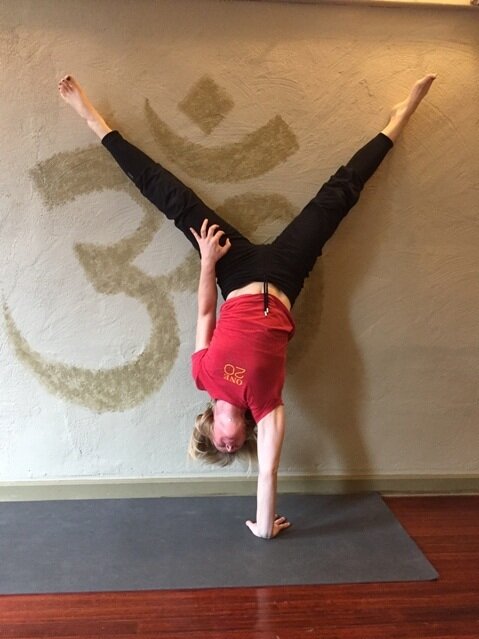Adho Mukha Vrksasana or Handstand
Adho downward
Mukha face
Vrksa tree
Adho Mukha Vrksasana literally means downward facing tree pose. We generally call this pose handstand. This is a very challenging but empowering pose. Most adults don’t go around standing on their hands, but in yoga class we often do.
The ability to stand on one’s hands is emotionally tied to the ability to support one’s self. This is especially empowering to women who, in the past, may have been socially and culturally taught to be dependent on a man for support. Stereotypically women are also generally weaker in their upper bodies than men. Sometimes women don’t think that they can do handstand. But, when we build the foundation carefully from Child’s Pose and Downward Facing Dog, into Handstand, it can be a very safe and rewarding posture. And, when students lift up into their first handstand, they are inclined to give out a whoop of excitement. It can be very fun and confidence building.
One of the most crucial aspects of this pose is the flexibility in the shoulder girdle. It is important to be able to raise the arms over head and make them straight and parallel. Because of many things in modern life from poor posture to smart phones, movement in the shoulder girdle is often compromised. When movement in the shoulders is limited, compensation will occur in other parts of the body such as the wrist, neck and back.
During this month of practicing Handstand, we will also work on the mobility of our wrists and back while opening the chest and shoulders.
One of the ways we might practice is by doing handstand lying on the ground. Take a look at these two photos of one of my students in Handstand: one is standing on her hands facing the wall and the other picture is actually the same photo. I just flipped it around so it looks as if she is lying on her belly. You know my saying: There are only 12 yoga poses and the variations are just done in different relationship to gravity.




